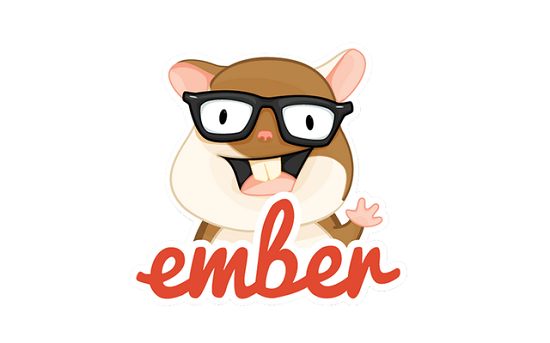Ember.js
Ember.js is an open source, MVC (Model-View-Controller), free JavaScript client-side framework used for developing web applications. Ember.js allows us to build client side JavaScript applications by providing us a complete solution which contains data management and an application flow. In comparison to other JavaScript MVC frameworks, it gives us the ability to write organized and structured code and as the Ember.js website says, this enables us to build “ambitious” web applications. It is focused on making us, the developer, as productive as possible by doing all the common, repetitive, yet essential, tasks involved in most web development projects.

The original name of Ember.js was SproutCore MVC framework and was developed by Yehuda Katz and was initially released on in December 2011. The most recent release of Ember.js is v3.28.1 and this was released on Aug 31, 2021.
Why use Ember.js?
The Ember.js framework pulls together a lot of modern JavaScript concepts and technologies into one single bundle and also provides us developers a lot of benefits. Some of them are listed below:-
- Ember.js provides the new binding syntax using the HTMLBars template engine which is a superset of the Handerlbars templating engine.
- It provides the Glimmer rendering engine to increase the rendering speed.
- It provides the Command Line Interface utility that integrates Ember patterns into development process and focuses easily on the developer productivity.
- It supports data binding to create the link between two properties and when one property changes, the other property will get upgraded with the new value.
- Ember.js also provides Ember Inspector tool for debugging Ember applications.
Ember.js basic concepts:
An Ember application basically consists of the following key concepts:
- Router – The router activates the appropriate template for a URL so that URLs can also be shared in a single-page application.
- Templates – A template contains the HTML framework of the application. For almost all templates a data model exists. If the data model changes, the template data changes, too.
- Components – In order to simplify templates, we can use controls to develop reusable HTML tags.
- Controllers – A template not only has a model but can also have a controller that manipulates data or provides extended functions.
- Models – A model contains the data and data models to display them in the templates.
Ember.js ecosystem:
One of the main strengths of Ember is how shared conventions enable developers to build on top of each other's work and improve the ecosystem for everyone. For example, here are some projects closely maintained by Ember teams:
- Ember CLI: The official command line toolkit to develop Ember applications. You can also check out the Ember CLI Guides for documentation.
- Ember Inspector: A browser plugin/bookmarklet that helps us inspect and debug applications.
- Ember Animated: Its is the core animation primitives for Ember.
- Ember Twiddle: Online code editor so we can share working snippets of code or reproductions of bugs.
- FastBoot: FastBoot is a Server-side rendering library for Ember applications.
- Ember Engines: Ember addon that allows multiple logical applications to be composed together into a single application from the user's perspective.
- Ember Observer: Ember Observer provides categorization and scoring for published Ember addons. We can also use Ember Observer to do a code search across the entire addon catalogue.
Installation:
For installing Ember-CLI, first we have to download and install “node.js” on our computer. Once we have node installed, we can get ember-CLI by opening up a command prompt and running:
$ npm install -g ember-cli
To verify that our installation was successful, run:
$ ember --version
If a version number is shown, we're ready to go.
To create a structure for the application we can run:
$ ember new project-name
This will create a folder called releases with everything needed to start coding. Change the current directory into releases and run:
$ ember server
Now we should be able to visit “http://localhost:4200” and see a very basic page.
Cons of Ember.js:
- Tough to learn - As compared to React or Vue, beginner developers might find Ember to be quite challenging to master. It is appropriate for complicated large-scale apps and might prove to be excessively heavy for simple small-scale apps.
- Highly opinionated - This framework is highly opinionated, given that any sort of deviation from performing things might result in frustrating issues.
- Sluggishness in popularity - It is a fact that Ember has suffered stagnation in favor during the last several years, and it has failed to attract any new developer.
Contributing:
If anyone interested in being a contributor and want to get involved in developing the Ember.js framework, can see CONTRIBUTING for details on submitting patches and the contribution workflow.
References:
- Ember.js docs: https://emberjs.com/learn/
- Tutorialspoint docs: https://www.tutorialspoint.com/emberjs/emberjs_overview.htm
- What is Ember.js: https://medium.com/aeturnuminc/what-is-ember-js-ff94403fec96
- Pros and cons of Ember.js: https://www.rlogical.com/blog/ember-js-with-its-pros-and-cons/